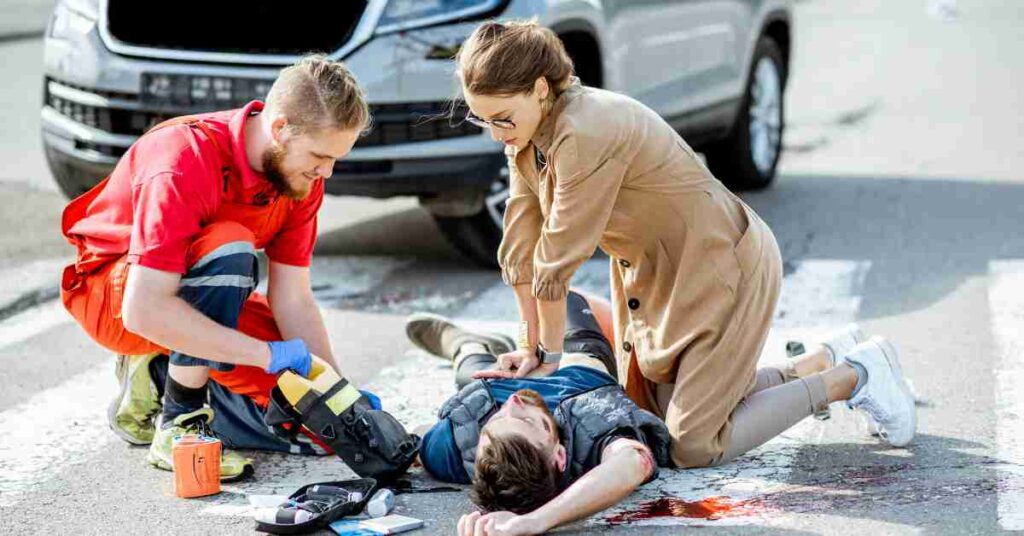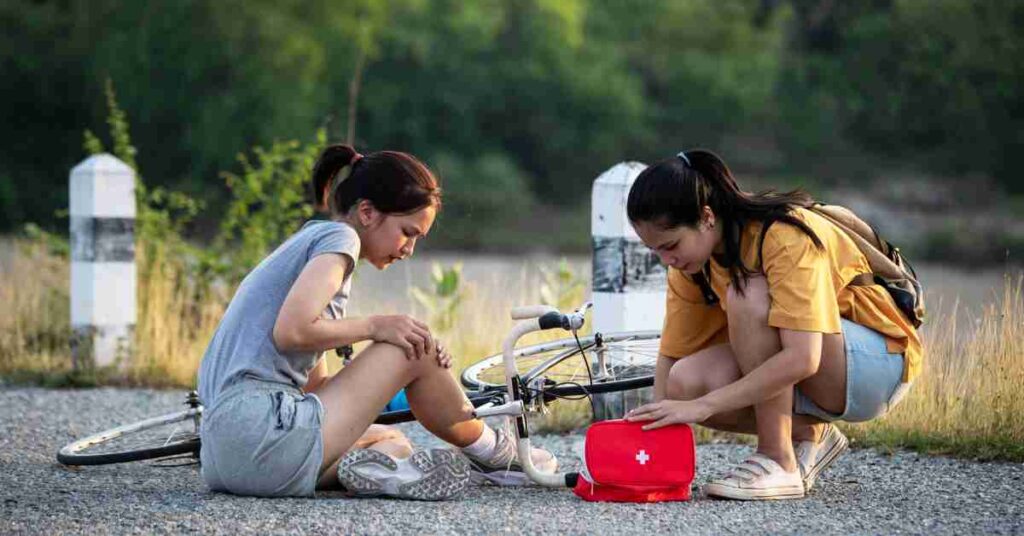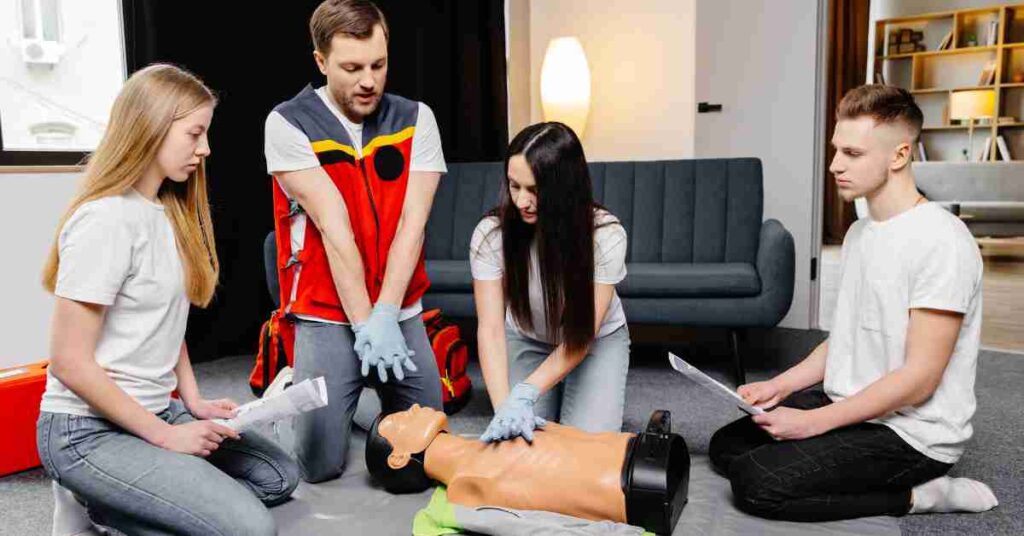Basic Life Saving: Essential Skills Everyone Should Know

Emergencies can happen when you least expect them, and knowing basic life saving skills can help you make a real difference in those moments. Whether someone is having trouble breathing, has been injured, or their heart has stopped, the right action can save their life. You don’t need to be a doctor to help—anyone, even teenagers, can learn these basic life saving skills.
This blog will explain what basic life saving means, how you can use it to help others, and why it’s so important for everyone to know.
Being prepared with these skills can help you stay calm and take quick action until professional help arrives. Learning basic life saving steps like CPR (to help restart someone’s heart), helping someone who’s choking, and stopping serious bleeding are simple but very effective ways to help in an emergency. These are skills everyone should know, because one day, you might need to use them to help someone you care about—or even a stranger.
Why Basic Life Saving Skills Are Important
In any emergency, the first few minutes are critical. Basic life saving skills allow you to provide immediate assistance, which can stabilise an individual’s condition until professional help arrives. These skills are particularly important in situations like cardiac arrest, choking, or severe injuries, where quick action can prevent serious harm or death. By learning these skills, you can stay calm and take effective steps to help someone in need.
Key Basic Life Saving Techniques

Here are the most important basic life saving techniques that everyone should know:
1. CPR (Cardiopulmonary Resuscitation)
CPR is a technique used when someone’s heart has stopped beating, often due to cardiac arrest. It involves performing chest compressions to manually pump the heart and keep blood flowing to the brain and other vital organs. This is one of the most important basic life saving skills because it can maintain circulation and increase the chances of survival until emergency services arrive.
2. Choking First Aid
Choking can happen to anyone, from small children to adults, and occurs when an object blocks the airway. Knowing how to respond quickly is important. The basic life saving technique for choking involves delivering firm back blows followed by abdominal thrusts to help dislodge the object. This method is quick to perform and can clear the airway effectively, allowing the person to breathe again.
3. Stopping Severe Bleeding
Heavy bleeding from injuries like deep cuts or lacerations can be life-threatening if not controlled quickly. One of the fundamental basic life saving techniques is to apply direct, firm pressure to the wound with a clean cloth or bandage. If possible, elevate the injured area above the level of the heart to reduce blood flow. This can help slow or stop the bleeding until medical professionals can take over.
4. Treating Animal Bites or Stings
Animal bites or stings from insects like bees, wasps, or spiders can cause serious problems if not treated quickly. If someone gets bitten by an animal or stung by an insect, the first thing to do is stay calm and get away from the animal or insect. For a sting, remove the stinger if it’s still in the skin. Then, wash the area with soap and water to clean the bite or sting.
If the person has pain or swelling, using an ice pack on the area can help. Sometimes, animal bites or insect stings can cause an allergic reaction, where the person might have trouble breathing or start to swell up. This is serious, and you should call for help immediately. Knowing how to give first aid for animal bites or stings is another important part of basic life saving.
How to Learn Basic Life Saving Skills

The best way to learn basic life saving skills is by taking a first aid course. These courses provide hands-on training and practice, helping you become comfortable with the techniques. Many organisations across Australia offer courses that cover CPR, first aid for choking, and AED usage. By completing a course, you’ll gain the confidence and knowledge to act swiftly and effectively in an emergency.
Everyday Situations Where Basic Life Saving Skills Are Useful
While basic life saving skills are crucial during major emergencies, they’re also helpful in everyday situations. For example, you can use first aid skills to manage minor injuries like cuts, burns, or sprains, preventing them from becoming more serious. Additionally, knowing how to handle situations like fainting, seizures, or allergic reactions ensures you can provide immediate care and comfort. These skills help maintain calm and control until professional help can arrive, making them invaluable in daily life.
The Benefits of Knowing Basic Life Saving Skills
Being trained in basic life saving skills not only helps you save lives but also makes you a valuable resource in your community. You’ll be prepared to assist during accidents, natural disasters, or any situation where medical help is not immediately available. This knowledge also reduces the feelings of helplessness and panic that can occur during emergencies.
Want more? We’ve got you covered…
Our Baby First Aid Courses
Our baby first aid courses are available in person in your home and online. We run classes in your home with groups of 2, 4 or up to 10 in Sydney & Melbourne and you can book in 3 easy steps!
- Pick your class
- Follow the prompts to purchase
- We will contact you within 24 hours to lock in your date of choice
Our First Aid Certificate Courses
We run most of the popular first aid courses Australia wide. HLTAID011 Provide First Aid, HLTAID009 Provide CPR, HLTAID012 Provide First Aid in an Education & Care Setting, RAMOAP (anaphylaxis), Mental Health first aid and CPR/LVR to name a few.
Book your public spot online or contact us if you have a group of 5+ people for onsite training.
Here are some other resources you may enjoy!
FREE GUIDE: Your Virtual Baby First Aid Kit
FREE GUIDE: Introducing Common Allergy Foods & Allergic Reactions
FREE Workplace Emergency Preparedness Plan: Grab this at the bottom of every page!
Follow for baby & child first aid and allergy info and tips on Instagram & TikTok, all @thenestcpr
